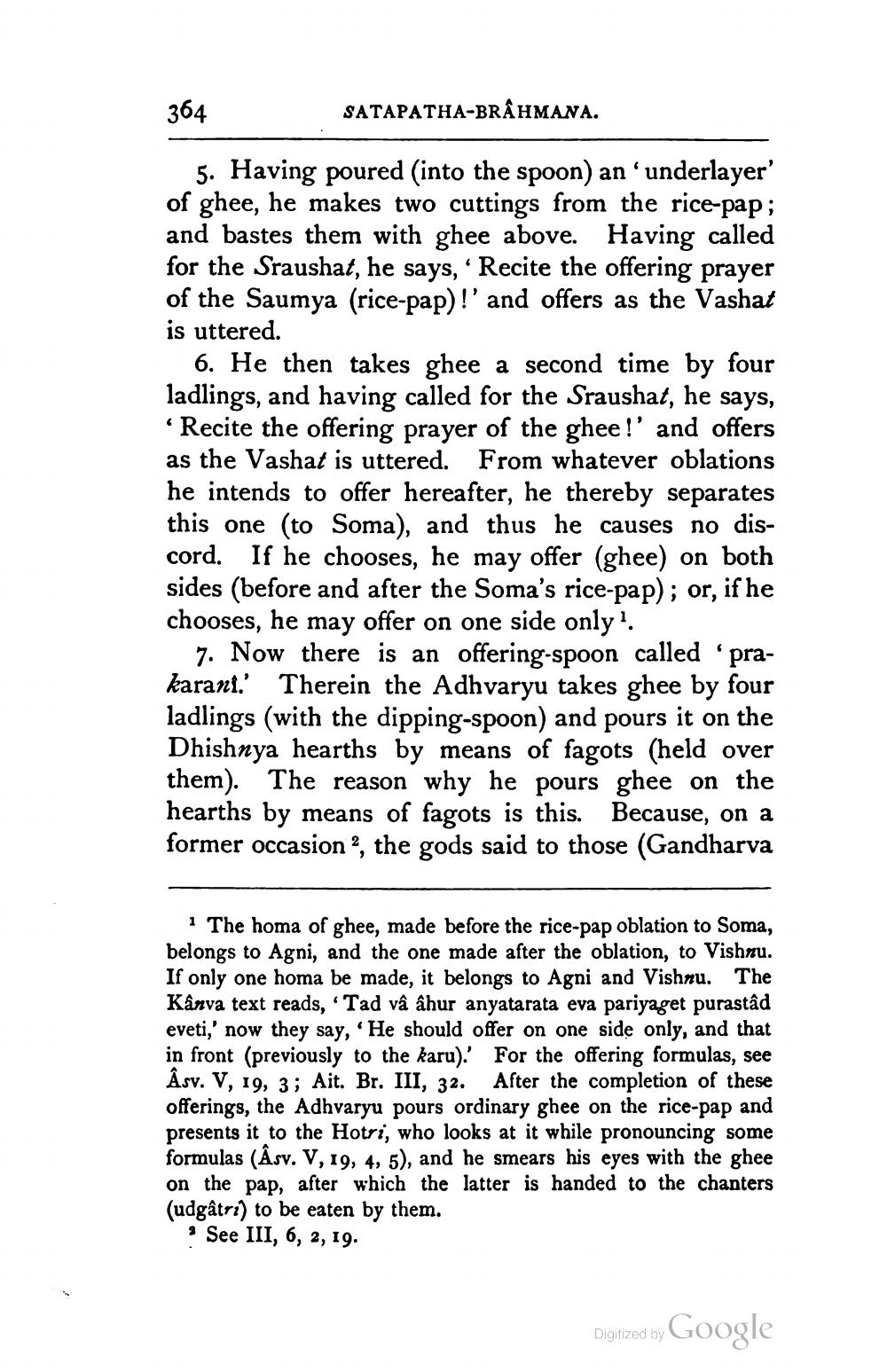________________
364
SATAPATHA-BRAHMANA.
5. Having poured (into the spoon) an 'underlayer' of ghee, he makes two cuttings from the rice-pap; and bastes them with ghee above. Having called for the Sraushat, he says, "Recite the offering prayer of the Saumya (rice-pap)!' and offers as the Vashat is uttered.
6. He then takes ghee a second time by four ladlings, and having called for the Sraushat, he says, "Recite the offering prayer of the ghee!' and offers as the Vashat is uttered. From whatever oblations he intends to offer hereafter, he thereby separates this one (to Soma), and thus he causes no discord. If he chooses, he may offer (ghee) on both sides (before and after the Soma's rice-pap); or, if he chooses, he may offer on one side only.
7. Now there is an offering-spoon called 'prakarant.' Therein the Adhvaryu takes ghee by four ladlings (with the dipping-spoon) and pours it on the Dhishnya hearths by means of fagots (held over them). The reason why he pours ghee on the hearths by means of fagots is this. Because, on a former occasion ?, the gods said to those (Gandharva
1 The homa of ghee, made before the rice-pap oblation to Soma, belongs to Agni, and the one made after the oblation, to Vishnu. If only one homa be made, it belongs to Agni and Vishnu. The Kanva text reads, 'Tad vâ âhur anyatarata eva pariyaget purastad eveti,' now they say, 'He should offer on one side only, and that in front (previously to the karu).' For the offering formulas, see Åsv. V, 19, 3; Ait. Br. III, 32. After the completion of these offerings, the Adhvaryu pours ordinary ghee on the rice-pap and presents it to the Hotri, who looks at it while pronouncing some formulas (Asv. V, 19, 4, 5), and he smears his eyes with the ghee on the pap, after which the latter is handed to the chanters (udgâtri) to be eaten by them.
· See III, 6, 2, 19.
Digitized by Google




